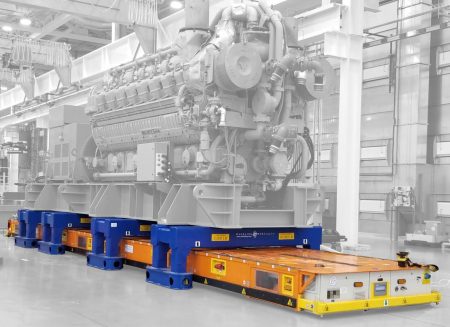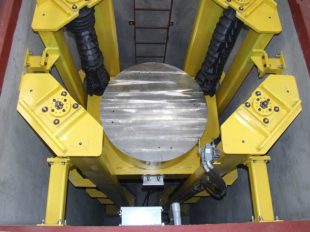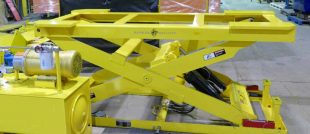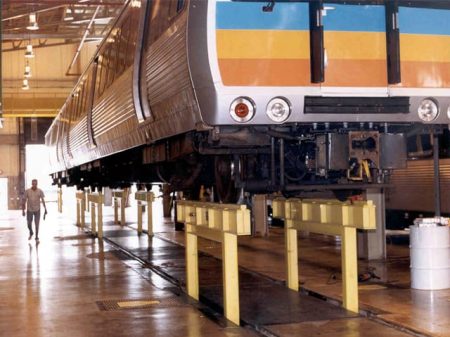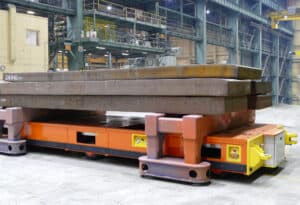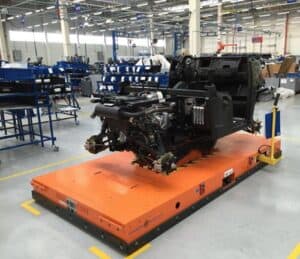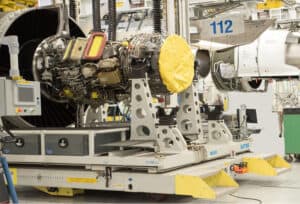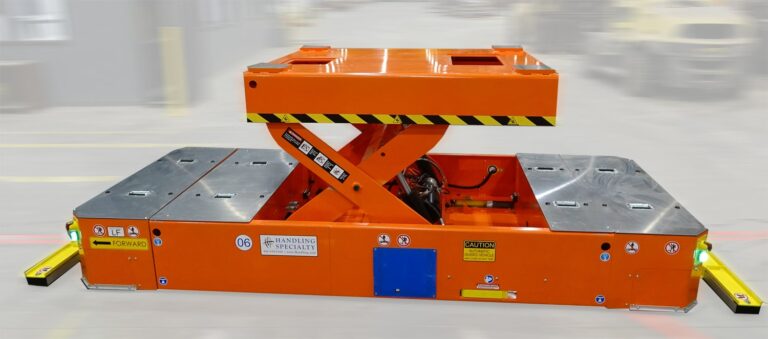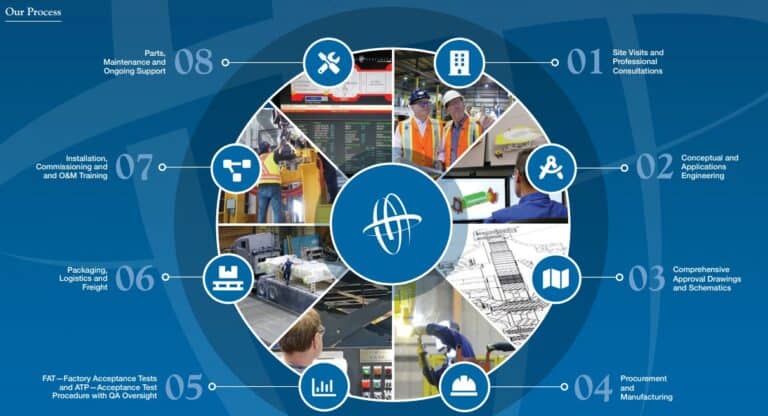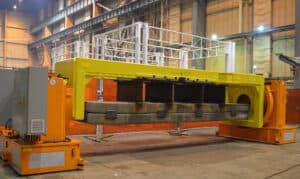Revolutionizing Industrial Automation with AGVs
Automated Guided Vehicles (AGVs) are crucial in safely automating sectors like manufacturing and assembly and have evolved significantly in design and functionality. The importance of automated guided vehicle design is paramount, impacting efficiency, safety, and productivity across various industrial landscapes such as assembly, manufacturing, repair, maintenance, and heavy industry.
Core Components and Functionality
AGV design components encompass robustness, flexibility, and scalability, ensuring operability in diverse industrial environments. AGV functionality design is crucial for navigation, obstacle interaction, size, carrying capacity, specialized tooling, and task management. Modern AGVs are equipped with advanced sensors, cameras, and software, enabling precise navigation and task execution.
Customization for Specific Industry Needs
Customized AGVs reflect the industry’s demand for tailored solutions. AGV industry customization involves adapting AGVs for specific tasks, like handling heavy-duty or hazardous materials or operating in confined spaces. AGV design for specific applications demonstrates their adaptability and versatility. Handling Specialty has been building custom AGVs for companies around the world for decades in industries such as Aerospace, Automotive, Advanced Manufacturing, Iron & Steel, Power Generation, Rail & Transportation, and more.
Innovations and Technological Advancements
Innovations in AGV design is a dynamic concept, driven by technological advancements and industry needs. No one industry or sector of that industry will necessitate the same AGV. The assembly of one Aerospace component and the maintenance of another would require customized tooling, sizing, and weight capacities. These innovations aim to enhance efficiencies within the processes and the AGV performance through improved battery life, speed, and load capacity. AGV design enhancements also include AI and machine learning integration for smarter adaptability and decision-making. IIoT (the industrial internet of things) is also a major upgrade to tracking the performance and planned maintenance of your automated guided vehicle systems.
Case Studies and Real-world Applications
Custom AGV case studies showcase the practical benefits of AGVs in various industries, illustrating how they address automated guided vehicle design challenges and solutions. These studies highlight the operational efficiency and safety improvements achieved through customized AGVs. Handling Specialty’s experienced technical sales, engineering, manufacturing, and services groups have multiple AGV case studies to draw from when considering your facility’s AGV system needs.
Designing for Efficiency and Enhanced User Experience
In industrial settings, AGV design for efficiency is crucial for optimizing workflows and minimizing downtime and accidents. Considerations like AGV size and navigation and AGV load capacity impact are vital for effective design. Additionally, a user-friendly AGV interface is essential for easy operator interaction, significantly enhancing the AGV user experience. The technologies of IIoT also apply here in utilizing its capabilities for predictive maintenance.
Future Trends in AGV Design
The significance of AGV design is expected to grow as assembly and manufacturing industries evolve. Future trends in AGV design may include deeper IIoT integration, increased autonomy, and enhanced customization capabilities. These developments will not only improve AGV design and usability, but also open new applications and efficiencies in the industrial sectors.
Expanding the Scope of AGV Applications
AGVs are expanding into new industries and applications. For instance, many of Handling Specialty’s AGVs are increasingly used in MRO operations to position parts for repair and cleaning. This expansion requires further customization and design considerations to meet the unique demands of these sectors.
Addressing Environmental Concerns
Environmental sustainability is becoming a critical aspect of AGV design. The development of eco-friendly AGVs, such as those powered by renewable energy sources, is on the rise. This shift not only reduces the carbon footprint of industrial operations but also aligns with global environmental goals.
Enhancing Safety Features in AGV Design
Advanced safety features, like real-time monitoring systems and automated safety protocols, are being integrated to prevent accidents and ensure the safety of both the AGVs and the human workforce. Typical safety features include collision avoidance systems, emergency stop buttons, warning lights and sounds, and sensors that detect obstacles and adjust the AGV’s path accordingly
Training and Skill Development
As AGVs become more advanced, the need for specialized training and skill development for operators is increasing. This training ensures that the workforce can effectively manage and maintain these sophisticated systems, maximizing their potential.
Economic Impact and ROI
The economic impact of AGVs is significant, offering a high return on investment (ROI) through increased productivity, reduced labor costs, and improved accuracy and efficiency. However, balancing the initial investment against long-term benefits is crucial for justifying AGV integration in business models.
Conclusion
Handling Specialty’s experience in creating turn-key industry assembly and manufacturing facilities that include AGV design and customization demonstrates that these custom material handling products are integral to the progress of industrial automation. By focusing on efficiency, user experience, and tailored solutions, AGVs are set to remain indispensable in various industries. Their ongoing development will continue to shape the future of automation, making industries more efficient, safe, and adaptable. Here, we aim to provide a comprehensive overview of AGV design and customization, tailored to inform and engage potential buyers interested in custom AGV solutions.
FAQ Section
What factors should be considered when designing a custom AGV for my business?
When designing a custom AGV, it’s important to consider factors such as the specific tasks the AGV will perform, the environment it will operate in (like assembly, size, and layout), load capacity requirements, navigation technology (like laser, magnetic, or vision-guided systems), additional tooling (like scissor lifts, rotators, and turntables), and any industry-specific needs (such as cleanroom standards or explosion-proofing). Understanding these factors ensures that the AGV perfectly suits your business needs.
How do innovations in AGV design enhance operational efficiency?
Innovations in AGV design, such as advanced AI for autonomous decision-making, improved battery technologies for longer runtimes, and sophisticated navigation systems, enhance operational efficiency by reducing manual intervention, minimizing downtime, and increasing flexibility in deployment. These advancements allow AGVs to adapt to changing environments and tasks, leading to more streamlined and efficient operations. IIoT (the industrial Internet of things) includes sensors at strategic positions on the AGV to offer real-time data on a component’s overall health offering maintenance updates and suggestions.
Can AGVs be integrated with existing assembly management systems?
Yes, AGVs can be integrated with existing assembly/manufacturing management systems (MS). Modern AGVs are designed with compatibility in mind, allowing them to communicate and synchronize with your MS. This integration enables better coordination of tasks, real-time tracking, and more efficient resource allocation, ultimately enhancing the overall workflow in the assembly facility.
What are the safety features typically included in custom AGV design?
Safety is a paramount consideration in AGV design. Typical safety features include collision avoidance systems, emergency stop buttons, warning lights and sounds, and sensors that detect obstacles and adjust the AGV’s path accordingly. These features ensure safe operation around employees, other equipment, and in various environmental conditions.
How does the user interface impact the adoption of AGVs in a facility?
A user-friendly interface greatly impacts the ease of adoption and effectiveness of AGVs. Interfaces that are intuitive and easy to navigate reduce the learning curve for employees, allowing for quicker integration into daily operations. Good interface design enables easier monitoring and management of AGV tasks, contributing to a smoother transition to automated processes.
By Michael Poeltl, Marketing Manager at Handling Specialty Manufacturing Ltd.

